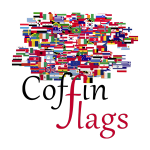Description
 Afghanistan, officially the Islamic Republic of Afghanistan, is a landlocked country in Asia. Afghanistan is bordered by Pakistan to the east and south; Iran to the west; Turkmenistan, Uzbekistan, and Tajikistan to the north; and China to the northeast. Occupying 652,000 square kilometres (252,000 sq mi), it is a mountainous country with plains in the north and southwest. Kabul is the capital and largest city. The population is 32 million, mostly composed of ethnic Pashtuns, Tajiks, Hazaras and Uzbeks.
Afghanistan, officially the Islamic Republic of Afghanistan, is a landlocked country in Asia. Afghanistan is bordered by Pakistan to the east and south; Iran to the west; Turkmenistan, Uzbekistan, and Tajikistan to the north; and China to the northeast. Occupying 652,000 square kilometres (252,000 sq mi), it is a mountainous country with plains in the north and southwest. Kabul is the capital and largest city. The population is 32 million, mostly composed of ethnic Pashtuns, Tajiks, Hazaras and Uzbeks.
The national flag of Afghanistan consists of a vertical tricolour with the classical National Emblem in the centre. The current flag was adopted on August 19, 2013, but many similar designs have been in use throughout most of the 20th century. Afghanistan has had 25 different flags since the first flag when the Hotak dynasty was established in 1709. During the 20th century alone, Afghanistan went through 18 different national flags, more than any other country during that time period, and most of them had the colours black, red, and green on them. Along with Haiti, Costa Rica, and Bolivia, it is one of four national flags in the world which has a depiction of its flag within the flag itself. The black colour represents its troubled 19th-century history as a protected state, the red colour represents the blood of those who fought for independence (specifically, the Anglo-Afghan Treaty of 1919), and the green represents hope and prosperity for the future. Some have alternatively interpreted the black to represent history, the red to represent progress, and the green to represent either agricultural prosperity or Islam. The tricolour was supposedly inspired by the Afghan King, Amanullah Khan when visiting Europe with his wife in 1928. The original horizontal tricolour design was based on that of the flag of Germany. The centre of the flag contains the Emblem of Afghanistan. Almost every national flag since 1928 has had the emblem in the centre. Almost every emblem has had a mosque in it, which first appeared in 1901, and wheat, first appearing in 1928.







